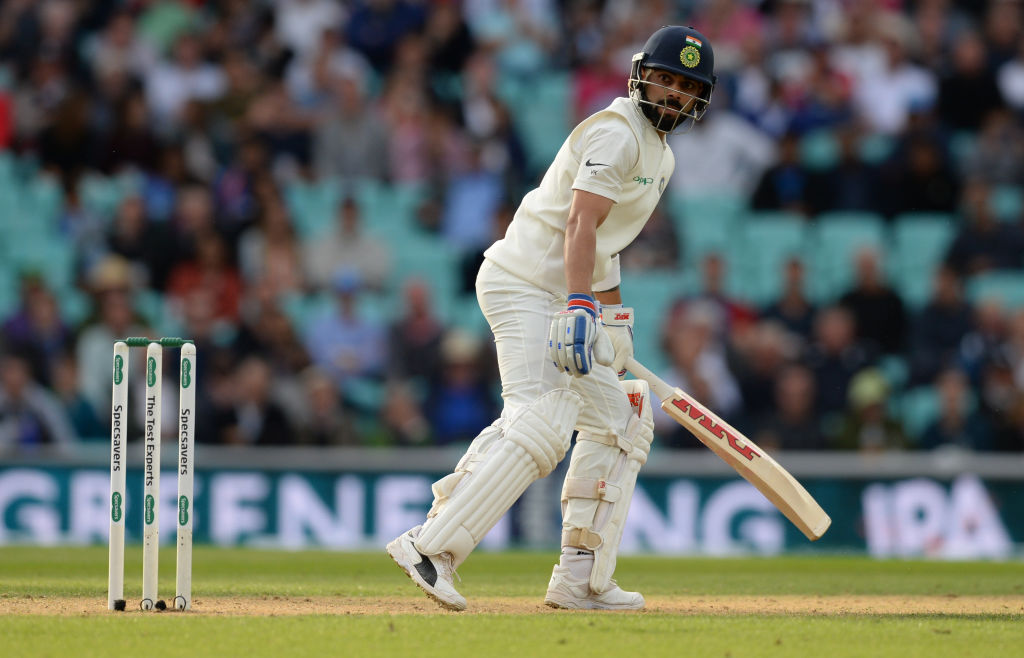India vs England | Takeaways : India’s inability to exploit Broad’s short-ball weakness and Virat Kohli’s controlled innings
India let the game slip away from their fingers as after allowing England to score 332 runs, they were reduced to 174/6 at stumps on Day 2. With a 1-4 loss looming large, the Indian pacers’ inability to exploit Stuart Broad’s weakness and Virat Kohli’s control made their way to our takeaways.

To go short or not to?
Let’s admit it first. It is always frustrating for any opposition if the tail wags for an extended period of time. But, after dismissing Sam Curran yesterday, it was expected that India would end the innings pretty soon and things wouldn’t repeat again. However, something familiar happened yet again as England went on to score 332 runs in the first innings. While many may choose to take a cynical look at it, there are two ways to look at the way India bowled today.
While Adil Rashid and Jos Buttler stitched together a 33-run partnership for the eighth wicket, Buttler and Stuart Broad added 98 runs for the ninth wicket to snatch the advantage from India. And a reason behind their easiness to score freely is in the lengths India have bowled. First, the pitch has plenty of seam movement in the full and good length area, but India failed to hit it often enough. If you think, they might have been bowling short balls - a funda that Australia used to great effect in the last Ashes against the English tailenders to wipe them out easily - let me tell you, they were not doing that as well.
The slowness of the wicket may have had an impact on Indian players not being able to bowl proper bouncers, but they weren’t even properly trying. They kept on bowling through the good line and especially, Jasprit Bumrah’s 18% deliveries would have hit the stumps. It was staggering, but allowing a No.10 batsman to settle and score 38 runs off 69 balls is a bookable offence despite knowing that he had an obvious problem with bouncers. At least try and see if the pitch is assisting or not!
Better late than never - England understand the template
An Indian pace-bowling attack has never been as eulogised as it has been in this series against England. Each one of them, including Hardik Pandya, had produced at least one match-winning performance in the series so far, which was hitherto unseen in Indian cricket. Agreed that most of those performances came on helpful conditions, but therein lies the beauty of the bowler - to stand apart and exploit the conditions.
However, at The Oval, there was no lateral movement whatsoever and the new ball did nothing and Indian pacers just managed to get a negligible 1.08° of swing and seam movement imparted just created 0.77° of movement on the ball. It needed a huge amount of patience and concentration to rise above the conditions and they took the hard way. They kept on bowling on a good line and length and managed to put 46% of deliveries there - the most they’ve managed in any Test this year. In the absence of lateral movement, India built pressure through accuracy.
However, England couldn’t take note of the same in the first session and despite the cloud cover over the London sky, England found 10% less swing than India and 20% less seam movement before the tea was taken on Day 2. But, they were more random in their approach in the beginning. Ben Stokes bowled 56% of his deliveries short of a good length in this innings, the most by any seamer in the match, despite knowing that it was not going to be a hugely likeable strategy.
Sam Curran created an awkward angle from over the wicket, but the lack of consistency to bowl at one length made him a lesser threat when he came out to bowl. But, when Curran pitched it in the area between 4 and 6 metres on the pitch - which has really been the most dangerous for batsmen facing fast bowlers - and showed how to bowl on such wickets. Anderson then did the same and extracted swing to dismiss Cheteshwar Pujara and Ajinkya Rahane.
Let’s talk about Virat Kohli’s control
Despite losing only one wicket throughout the first two sessions, England
But, Kohli is not a batsman who let others dominate him that easily. He had a better control percentage than any of the English batsmen and decided to use his bottom-hand while playing in the front-foot. As a result, 66% of Kohli's runs came through the leg-side, the highest figure for any of his Test innings since March 2017. That was a revealing aspect today because he decided to bat out of the crease even against the seam movement and there was hardly any back-foot play in the first four matches, barring the Trent Bridge one. Today, he didn’t move much, but still reduced the cover drive drastically and scored runs from pull and flicks. It is just a shame that he got out fishing one outside off-stump while going for a cover drive.

Comments
Sign up or log in to your account to leave comments and reactions
0 Comments